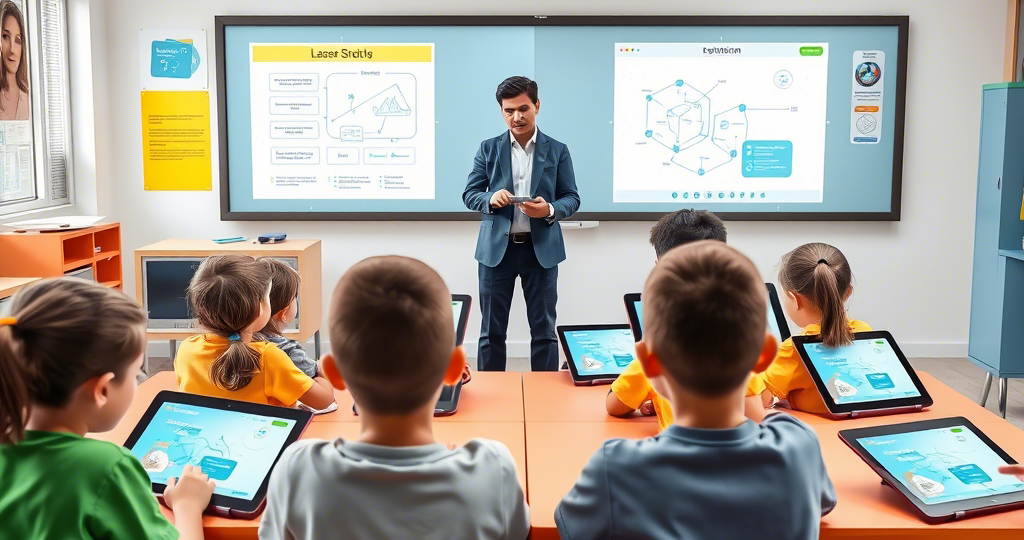Creating a highly effective classroom 15x environment is essential for both student learning and teacher satisfaction. In today’s ever-changing educational landscape, teachers are challenged to manage dynamic and diverse classroom settings that demand flexibility, technology integration, and innovative discipline strategies. A “15x” environment can be thought of as a space that is amplified in its challenges and opportunities—a place where traditional classroom management methods are enhanced with modern tools, differentiated instruction, and creative engagement strategies. This guide provides 15 practical tips to help you manage a classroom environment that is vibrant, efficient, and conducive to learning.
1. Set Clear Expectations and Rules
Begin by establishing a clear set of rules that reflect your classroom’s unique “15x” environment. Use simple language and involve your students in creating these rules to ensure buy-in and mutual understanding. Write the rules on a visible board and review them regularly, ensuring that every student knows what is expected.
Tip: Involve students in the rule-making process. This fosters ownership and reduces resistance when rules need to be enforced.
2. Develop Consistent Routines
Consistency is the backbone of a well-managed classroom. Develop and maintain routines for common tasks—entering the classroom, transitioning between activities, and group work. When students know what to expect, they’re more likely to follow procedures, reducing downtime and behavioral disruptions.
Tip: Use visual schedules and checklists to remind students of daily routines. Over time, these routines become second nature.
3. Embrace Technology
In a classroom 15x environment, technology can be a game changer. Use digital tools such as interactive whiteboards, tablets, and educational apps to engage students and streamline instruction. Incorporate platforms like Google Classroom to manage assignments, provide instant feedback, and keep everyone connected.
Tip: Leverage adaptive learning software to cater to individual student needs. Technology not only enhances learning but also allows for differentiated instruction.
4. Create an Engaging Physical Environment
The physical layout of your classroom can significantly affect behavior and engagement. Consider flexible seating arrangements that allow for both independent work and collaborative group projects. Ensure that the classroom is well-lit, decorated with student work, and organized in a way that minimizes distractions.
Tip: Use ergonomic furniture and clear pathways to facilitate movement. An inviting and organized space encourages students to take ownership of their learning environment.
5. Use Proactive Behavior Management Techniques
Instead of reacting to disruptions after they occur, adopt proactive strategies to prevent them. Use techniques such as positive reinforcement, non-verbal cues, and proximity control to address potential issues before they escalate. Establish a system of rewards and recognition to motivate good behavior.
Tip: Create a “praise board” where students’ positive behaviors are highlighted. This not only reinforces good conduct but also builds a positive classroom culture.
6. Foster Positive Relationships
A supportive teacher-student relationship is the foundation of effective classroom management. Get to know your students individually—learn their names, interests, and strengths. This rapport makes it easier to manage behavior, as students are more likely to respond positively to a teacher who shows genuine care.
Tip: Schedule regular one-on-one check-ins with students. This helps in identifying and addressing any issues before they become disruptive.
7. Differentiate Instruction
In a classroom environment with diverse needs, differentiated instruction is crucial. Tailor your lessons to accommodate varying skill levels and learning styles. Use small group work, peer tutoring, and individualized tasks to ensure every student is challenged appropriately.
Tip: Utilize assessment tools to track student progress and adjust your instruction accordingly. Data-driven instruction ensures that each student is learning at a pace that suits them.
8. Incorporate Flexible Grouping Strategies
Grouping strategies are essential for maintaining engagement and managing behavior. Rotate groups frequently to encourage new interactions and prevent cliques from forming. Whether using pairs, small groups, or whole-class discussions, ensure that groupings are purposeful and dynamic.
Tip: Use seating charts and group contracts to set clear expectations for collaborative work. This clarity can reduce conflicts and enhance productivity.
9. Communicate Effectively
Clear, concise, and respectful communication is key to classroom 15x management. Use a firm yet friendly tone when addressing behavior. Give clear instructions and check for understanding by asking students to paraphrase the task. This not only ensures clarity but also reinforces your authority in a respectful manner.
Tip: Implement “active listening” strategies, both for yourself and your students. When students feel heard, they are more likely to adhere to classroom norms.
10. Manage Transitions Smoothly
Transitions between activities can often lead to disruptions. Plan and practice transition procedures so that students know exactly what to do when moving from one task to another. Use timers or countdowns to signal transitions and maintain a sense of urgency and structure.
Tip: Create transition signals—such as a specific sound or hand signal—that prompt students to shift focus quickly without confusion.
11. Utilize Non-Verbal Cues and Proximity
Sometimes, a simple non-verbal cue or a brief movement closer to a disruptive student can redirect behavior without interrupting the flow of the lesson. This method allows you to manage behavior subtly while maintaining a positive classroom atmosphere.
Tip: Develop a repertoire of non-verbal cues, like eye contact or hand signals, that your students can easily recognize and respond to.
12. Encourage Student Ownership and Responsibility
Empower students by giving them roles and responsibilities in the classroom. Whether it’s leading a group discussion, managing materials, or monitoring classroom 15x routines, student involvement fosters a sense of ownership and accountability.
Tip: Create a rotating “classroom leader” role to give each student the opportunity to contribute. This not only builds leadership skills but also reinforces a collective responsibility for the classroom environment.
13. Provide Regular Feedback and Reflection Opportunities
Regular feedback is essential for both academic and behavioral growth. Give immediate, constructive feedback during lessons and at the end of the day. Encourage students to reflect on their own behavior and learning. Reflection helps students internalize what they’ve learned and understand the impact of their actions.
Tip: Use exit tickets or quick surveys to gather feedback on lessons and behavior. This data can help you adjust your strategies in real time.
14. Incorporate Mindfulness and Stress-Reduction Techniques
A calm classroom is one where both students and teachers know how to manage stress. Integrate mindfulness activities into your daily routine—such as deep breathing exercises, short meditation sessions, or quiet reading time—to help students stay focused and reduce anxiety.
Tip: Start the day with a mindfulness exercise to set a calm tone. Even a brief 2-3 minute session can significantly enhance focus and reduce disruptions.
15. Reflect and Adapt Continuously
Classroom management is not a one-size-fits-all approach. It requires ongoing reflection and adjustment. Regularly assess what strategies are working and which need improvement. Be open to new ideas and willing to adapt your approach to meet the evolving needs of your students.
Tip: Maintain a reflective journal where you note successes, challenges, and ideas for future strategies. Collaboration with colleagues can also provide fresh insights and support.
Final Thoughts
Managing a classroom “15x” environment—a dynamic, multifaceted space where traditional challenges are amplified by modern demands—requires a combination of clear expectations, effective routines, technology integration, and a commitment to building strong relationships. By adopting these 15 strategies, you can create a calm, controlled, and engaging classroom 15x where every student has the opportunity to learn and thrive.
Remember, the key is consistency. Even when challenges arise, a well-managed classroom offers stability and predictability, enabling both you and your students to focus on what truly matters—learning and growing together.
Embrace the journey of continuous improvement. Every classroom is unique, and with patience, creativity, and the right tools, you can create an environment that not only meets but exceeds your expectations.




